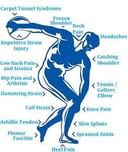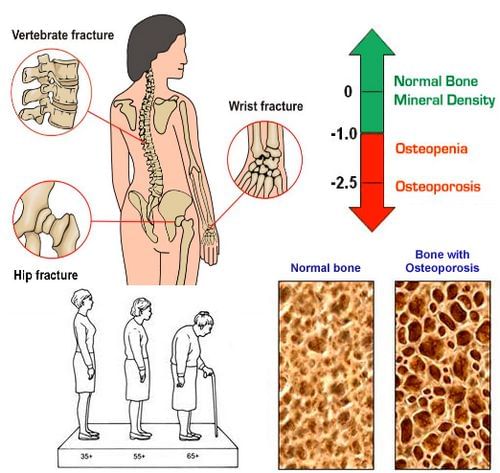Osteoporosis and Exercises
Hello Friends,
What is osteoporosis?
The components of the word 'osteoporosis' literally mean 'porous bones' - 'osteo' is for bones, and 'porosis' means porous - helpfully describing this condition that results in reduced bone density and increased fragility of the bones.The thinning of the bones in osteoporosis, combined with the formation of weaker bone crystals, puts people at a higher risk of Fall and Fractures.
It can affect anyone of any gender, but it is particularly prevalent in postmenopausal women due to the sudden decrease in protective oestrogen levels after menopause.
Signs and Symtom
Bone loss that develops slowly, leading to osteoporosis, does not cause any symptoms or outward signs.
As such, a patient may only discover that they have osteoporosis due to an unexpected fracture after a minor fall or a slip or strain - or even a simple cough or sneeze - may result in a fracture.Breaks in the spine can lead to altered posture, with compressed vertebrae creating the stooped appearance often seen in older people
Diagnosis
- Osteoporosis may be diagnosed directly through the use of a bone scan that measures bone mineral density (BMD). Central or peripheral DXA.
- Osteoporosis is diagnosed when the T-score is -2.5 or below.
- Other methods of measuring bone density include x-ray, ultrasound, and CT scan
Treatment
It is important to ensure the cause of low bone denisty has been properly diagnosed as the treatment will vary greatly.the decision about what treatment you need – if any – will also be based on a number of other factors. These include your:
- age
- sex
- risk of fracture
- previous injury history
Treating osteoporosis involves treating and preventing fractures and using medication to strengthen bones.
How Can a Physical Therapist Help?
Your physical therapist can develop a specific program based on your individual needs to help improve your overall bone health, keep your bones healthy, and help you avoid fracture. Your physical therapist may teach you.
- Specific exercises : to build bone or decrease the amount of bone loss
- Proper posture
- How to improve your balance so as to reduce your risk of falling
- How to adjust your environment to protect your bone health
Typically, exercises are performed 2 to 3 times a week as part of an overall fitness program.Your exercise routine should include exercises in each of the following areas:
- Strengthening exercise
- postural exercise
- balance exercise
- weight-bearing
- Flexibility exercise
1) Strength training
Strength training is a type of exercise with the goal of improving muscular strength. It involves performing movements against resistance; it is sometimes referred to as resistance training. Exercise bands, weights, machines or even your own body weight can be used for resistance. Strength training may increase spine and hip bone mineral density.
2) Posture training
Posture training involves paying attention to how the parts of our body are aligned with each other. Some kyphosis, or curvature of the upper back, is normal, but fractures or weak back extensor muscles can cause the spine to curve more than usual, resulting in an exaggerated kyphosis or excessively curved upper back.Attention to alignment during activity and at rest, along with exercises targeting the back extensor muscles, can improve the alignment of the spine. Flexion exercises are often CONTRAINDICATED. .
3) Balance training
Balance training exercises are those that challenge your balance.Balance exercises are also important to incorporate to further reduce the risk of falls Examples include:Shifting weight to the limits of support (e.g., moving your weight more to one foot than another).
Physical activities like Tai Chi, that involve balance and coordination may also reduce falls and fractures.
Tai Chi is a very safe and effective low impact form of exercise that improves balance and reduces the risk of falls.
4) Weight bearing Aerobic (water) physical activity
Aerobic exercise is a rhythmic activity that you do for at least 10 minutes at a time continuously and it increases your heart rate and makes you breathe harder than you usually do during your daily activities.For individuals with osteoporosis, we often recommend weight-bearing aerobic exercise or physical activity like walking or cycling or swiming or guided exercises to be done in swimmimng pool
5 flexibility exercise:
These can help improve the individuals overall physical function and postural control
Start by speaking with a physical therapist or consult me to ensure you are choosing safe , specific and appropriate physical activities for you.
Remember: if you have osteoporosis, aerobic exercise is not enough. Strength training and balance training are essential to maintain bone and muscle, and prevent falls.
"Osteoporosis is not a inevitable part of aging it is preventable.So it is vital that all of us,start taking care of our bones now, before its too late"..quote by Camila Parler Bowles
Thanks



+1.svg)
